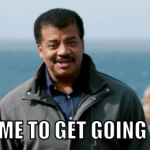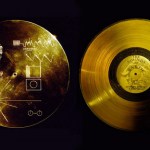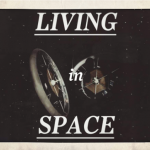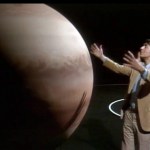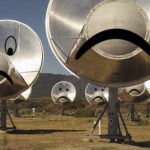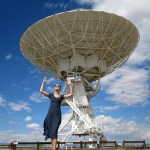Carl Sagan
If you missed the first (or later any) episode of Cosmos 2014, you can get it on Amazon Prime streaming (for a fee). It's worth it. Here are a few comments I jotted down (then lightly edited) while watching the first episode.
Neil does have his own spaceship, like Carl did. That's important because it lets him fly to interesting places. It is one of those spaceships of the imagination. Everybody should have one.
The visuals are amazing and informative and seem to be scientifically accurate to the extent possible. There is quite a bit of attention to scale, and how perspective shifts with…
By USA Science & Engineering Festival Founder Larry Bock
"Somewhere, something incredible is waiting to be known." - Carl Sagan
The excitement, the rigors and the risk of scientific discovery: Sagan loved and shared these emotions more effectively and openly with us than perhaps any other contemporary scientist. And in the process he helped catapult "science outreach" into the public lexicon.
Today more than ever, if we are to inspire the next generation of innovators and better inform the public about science, we, with Sagan-like boldness, need to rethink science outreach,…
"History is full of people who out of fear, or ignorance, or lust for power has destroyed knowledge of immeasurable value which truly belongs to us all. We must not let it happen again." -Carl Sagan
From the streets and people of our hometown to the nations, planets, stars and galaxies (and beyond) of our Universe, there's an immensity of knowledge to be gained from a single human lifetime, if only we have the courage to let go of our preconceptions and discover it. Laura Viers might tell you that in her own way in her 2005 song,
Galaxies.
But no one is born with this knowledge; it takes hard…
In 1977, NASA sent a pair of unmanned probes named Voyager 1 and Voyager 2 into space. Among the infrared spectrometers and radio receivers included on each probe were identical copies of the same non-scientific object: the Voyager Golden Record.
Sheathed in a protective aluminum jacket, the Record is a 12-inch gold-plated copper disk containing sounds and images chosen to portray the diversity of life on Earth: bird calls, whale songs, the sounds of surf, wind, and thunder, music from human cultures, and some 55 greetings in a range of languages, alive and dead. Like lonely time capsules,…
... you must first invent the universe. -- Carl Sagan, born this day in 1934 and the primary inspiration for this blog.
In the mid-1970s, the U.S. State Department prohibited the internal use of the term "space colony," due to the global bad reputation of colonialism. Instead, the government opted for "space settlement." Of course, as Stewart Brand pointed out at the time, the last thing you do in space is settle. Quite the opposite! Making the decision to explore space -- and live there -- is just about the most unsettled act a human can commit.
There have always been two camps on this issue. First, the unsettled, like Brand: the science-fiction aficionados, capitalists, rocketry geeks, macrocosmic thinkers,…
Ed: This is an essay I wrote for my friends at the World Science Festival, riffing on the central themes of this years' event. If you prefer, you can also read this piece on the World Science Festival site. And, if you're in New York between the first and fifth of June, you could do much worse than popping into the Festival and getting a load of panel discussions like The Dark Side of the Universe, or Science & Story: The Art of Communicating Science Across All Media.
Science communication is difficult.
It can be crippled by the complexity of its own subject matter. It can be steeped in…
As you may have heard, SETI is in trouble.
Funding cutbacks on a state and federal level have forced the Allen Telescope Array -- SETI's new homebase, actually just a part of the U.C. Berkeley's Hat Creek Radio Observatory (HCRO) -- into indefinite hibernation. With U.C. Berkeley losing ninety percent of its NSF University Radio Observatory money this year, and the growing California budget shortfalls, the hunt for extraterrestrial life has simply, and pragmatically, fallen by the wayside.
This financial deficit particularly smarts because the Allen Telescope Array was just about to…
I've been playing a bit with the alpha of Qwiki, a new website that offers users an innovative "information experience." The site collects images, videos, and text about topics from the internet and then displays the images future-aesthetically while reading the information in a delightful robot voice. There are still some kinks to work out, but overall it's kind of cute and fun! Here is Qwiki Science:
And Qwiki Science Heroes--Carl Sagan:
Just like on wikipedia, it's easy to fall into a procrastination spiral clicking on related links, but it's worth signing up and poking around!
The author, dishing.
To get to the National Radio Telescope Observatory, you have to be committed.
Well, first, you have to be in New Mexico -- about an hour's drive south of Albuquerque, in the plains of San Augustin, to be precise, a Pleistocene lakebed bordered by the northern end of the Chihuahuan Desert and dotted with arid shrubs. Despite being some 6,970 feet above sea level, it feels like the basement of the world, wide and flat and under the massive Southwestern sky. Driving to the Observatory, the home of the famous "Very Large Array" of radio telescopes, is an exercise in…
Greetings from the People of Earth from World Science Festival on Vimeo.
I made the above video, Greetings from the People of Earth, to open the World Science Festival 2010 panel "The Search for Life in the Universe," which featured personal hero Jill Tarter, David Charbonneau, and Steven Squyres.
In 1977, taking advantage of a fortuitous alignment of planets, NASA dispatched two spacecraft named Voyager into space. These probes, now the farthest human-made objects from Earth, carry with them a unique recording, the Voyager Golden Record. Compiled by a team under Dr. Carl Sagan, the Golden…
I hadn't really planned on writing anymore about animal rights extremists. The topic seemed as though it had played out over the few days. But those who've followed this blog know that I'm nothing if not tenacious when I grab onto a topic, and sometimes certain topics demand several posts. More importantly, over the last few days, I've had a minor infestation of animal rights extremists into my blog. Heck, Camille Marino even made an appearance. However, one animal rights apologist has been particularly persistent, someone named Douglas Watts, who's been a particularly persistent pest,…
tags: physics, flatland, 4th dimension, Carl Sagan, streaming video
In this video, world famous astronomer and astrophysicist, the great Carl Sagan, explains the 4th dimension. I wonder if Carl knew how funny he was? [7:15]
Science, as a discipline, is driven by the desire to understand everything. The immensity of such a project necessitates that science be undertaken not by one group of men and women in one time, but all men and women for all time. However, the final goal always eludes us: to understand this, we must first understand this, but to understand that, we must understand this, ad infinitum. In fact, the very notion of there being a final point in science has become so abstract as to be almost irrelevant; the more we know, the more we know that we do not know, and the end of the game is nowhere to…
